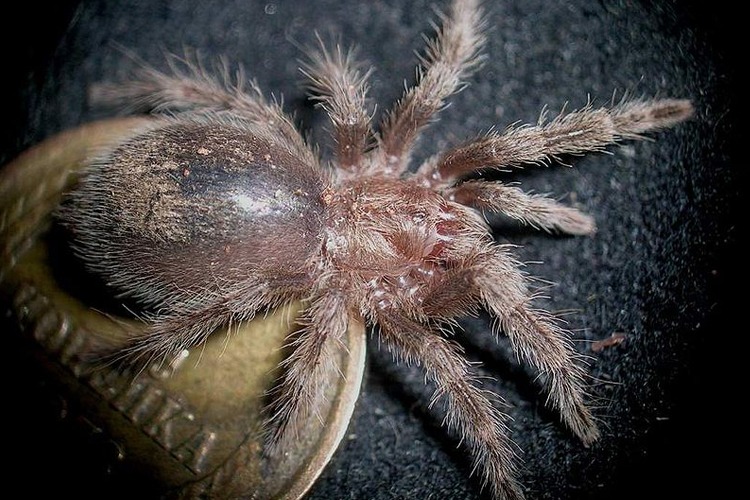The Brazilian Black Tarantula, also known as Grammostola pulchra, is a tarantula species endemic to Brazil. It is widely known for its velvety black body and long legs, making it a sought-after spider pet in the pet trade. The Brazilian Black Tarantula possesses chemical sensors on their body, which help them detect if something is food or liquid. If you want to find out more exciting information about this tarantula species, make sure to read further!
History
This tarantula species was first described in 1921 by Brazilian zoologist and founder of Arachnology in South America, Cândido Firmino de Mello-Leitão. This species is desirable in the pet trade because of its velvety body and the females’ long life span, and reputation of being gentle and docile in temperament. Compared to other tarantulas, Brazilian Black Tarantulas have a lesser tendency to throw urticating hairs when threatened since they tend to flee rather than attack a threat. This behavior only increases its desirability among pet owners, especially beginners. However, female Brazilian Black Tarantulas are usually expensive in the pet trade due to the restrictions in catching tarantulas in the wild.
Characteristics of a Brazilian Black Tarantula
Average life span: Females live to 20 years, while males only live up to 5 years
Average size: 6 to 7 inches
Average growth rate: Slow to medium
There’s nothing much distinctive among Brazilian Black Tarantulas other than their solid black, velvety bodies. They are covered in tiny hairs barbed at the ends that allow them to sense movement nearby, and yet can also be thrown off when they’re threatened. Compared to other tarantula species, their venom is not that irritating, which only increases its desirability. However, the Brazilian Black Tarantula is a slow grower—it takes up to 9 years to achieve maturity.
Brazilian Black Tarantulas are terrestrial, ground-dwelling tarantulas that take refuge in their burrows, either to wait for aliment or hide when threatened. Like other tarantulas, the Brazilian Black Tarantula will mold and shed its exoskeleton, which resembles the tarantula itself and may cause confusion among humans.
Caring for a Brazilian Black Tarantula
The Brazilian Black Tarantula is a solitary spider, hence it would not need a company in an enclosure. The rule of thumb when choosing an enclosure is that the length and width must be 2 to 3 times more than the leg span. Round enclosures should have a diameter three times greater than the leg span. A 10-gallon enclosure for an adult tarantula would be ideal.
Provide a semi-arid set-up for your spider pet. They use their fangs to dig in hard-packed soil and can chew carious materials. Keep in mind that floor space is more critical for your ground-dwelling tarantula. Provide a five- to six-inch layer of substrate for your pet. Substrates such as peat moss, ground coco fiber, peat humus, or a mixture of these three can be used. Provide a hideout for your pet as well—a log, coconut shell, half of a clay pot, or a spider house you’ll usually find in your local pet store. Decorations are not necessary, but you can add some to add visual elements.
Keep the temperature between 65 and 85 degrees Fahrenheit. Keep in mind that temperature levels vary wildly in nature, and Brazilian Black Tarantulas are adaptive creatures. While they can survive at temperatures, a temperature between 75 and 85 degrees Fahrenheit will give them enough heat to maintain good health. Use a thermometer to measure the temperature.
While your spider pet gets most of its hydration from its prey, you should still provide a shallow water dish at all times. Not only it keeps the Brazilian Black Tarantula healthy, but it also maintains great humidity levels in the enclosure. While they do not require special lightings, a 15-watt fluorescent light can provide a great basking spot for your spider pet.
When it comes to their diet, Brazilian Black Tarantulas are not different from other tarantula species. These spiders feed on crickets, roach nymphs, and other small insects. Keep in mind that the prey item should not be larger than the overall body size. You can provide 3 to 8 prey items per month to an adult, and 1 to 2 prey items for a spiderling every other day.

